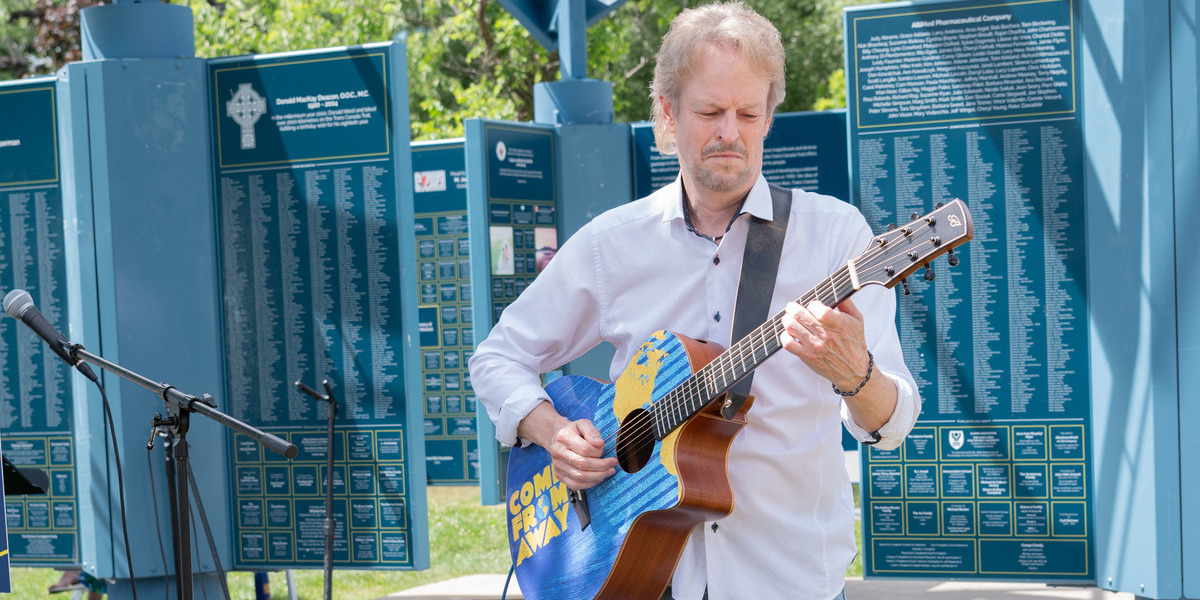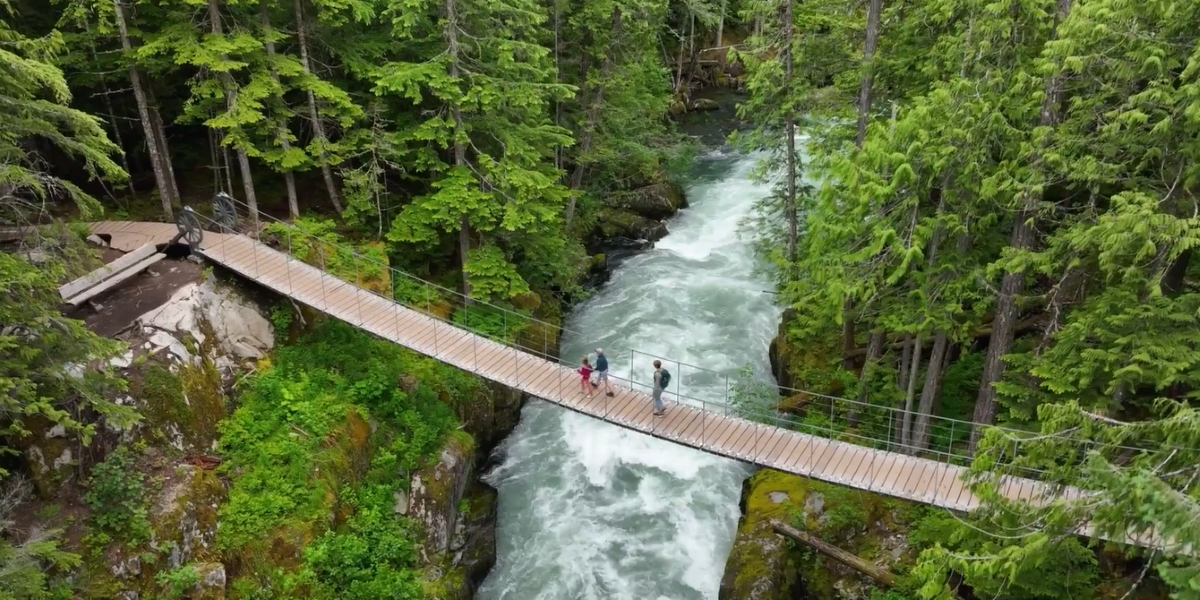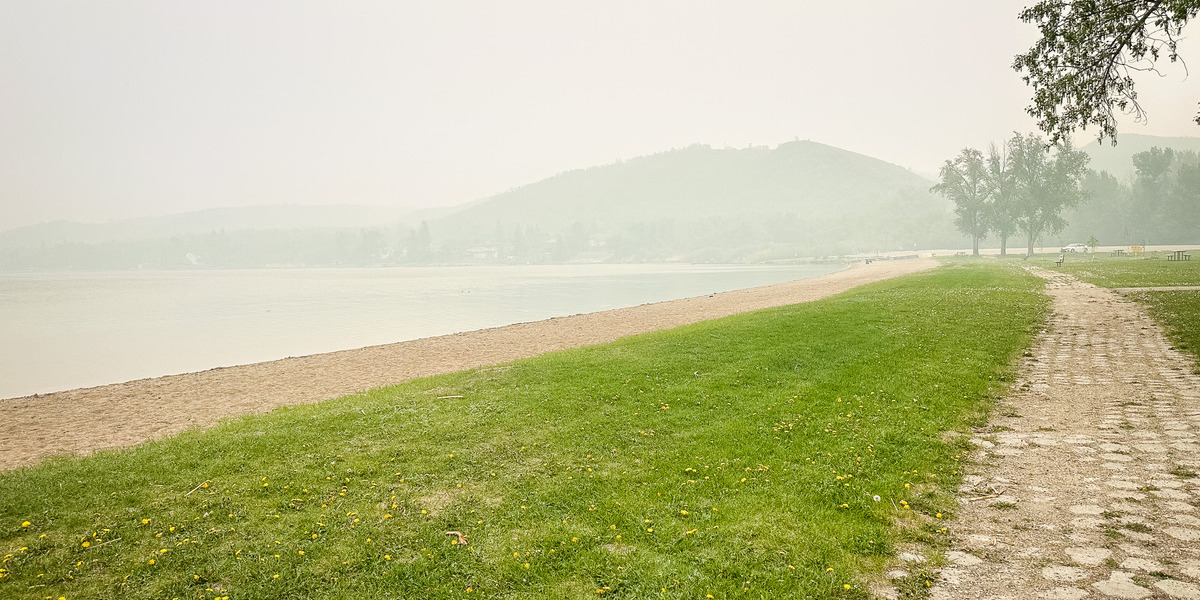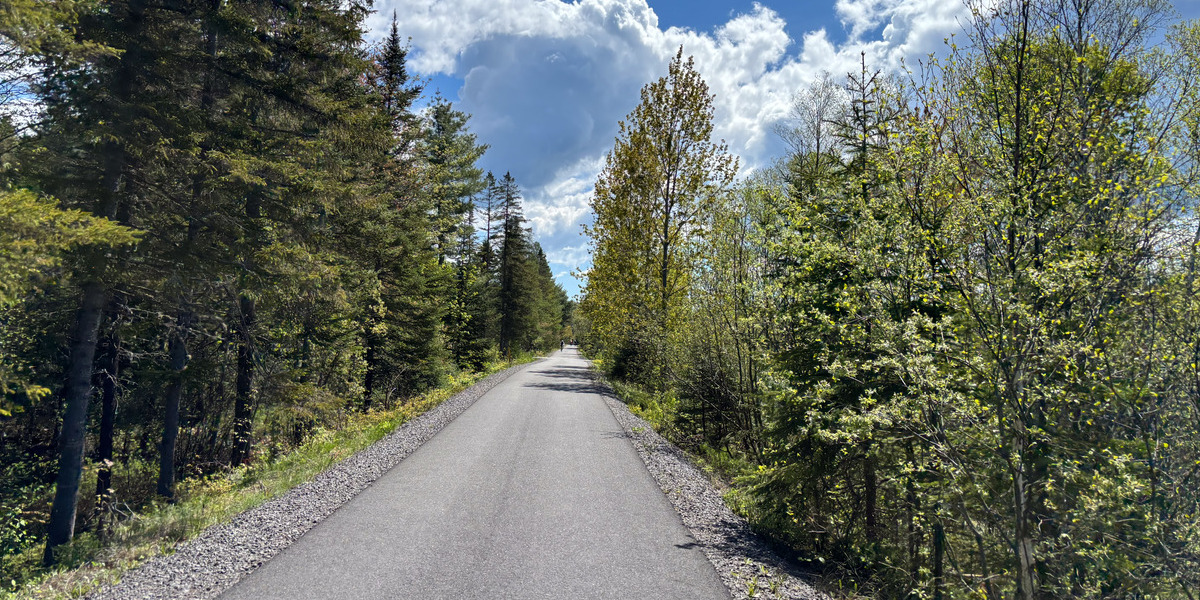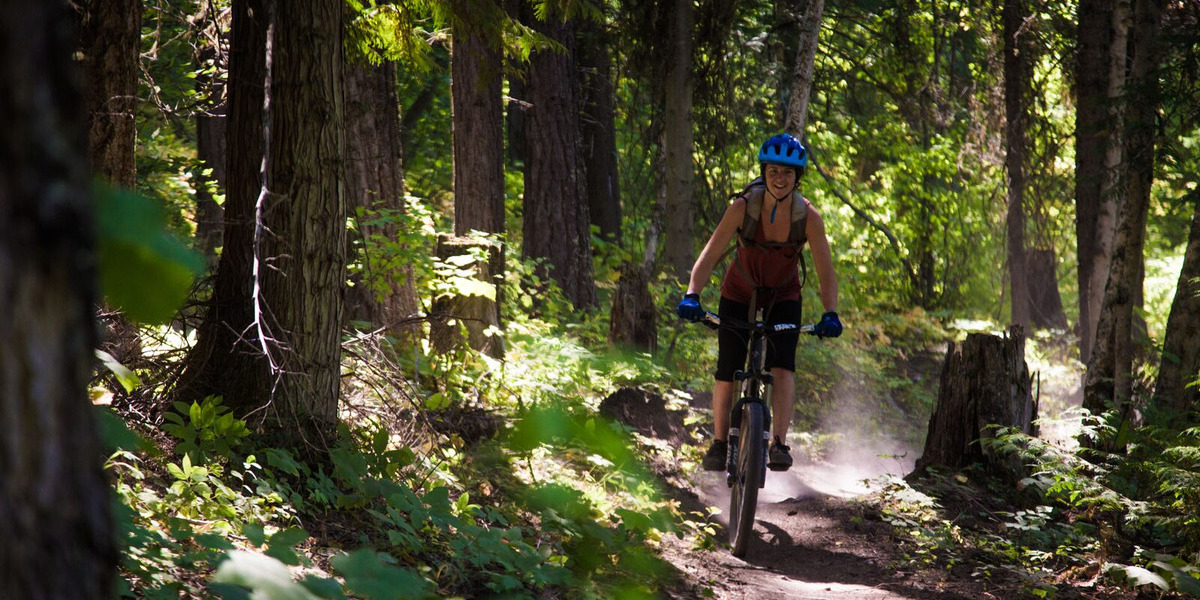Claude’s Trans Canada Trail: Cycling Back in Time in Quebec City
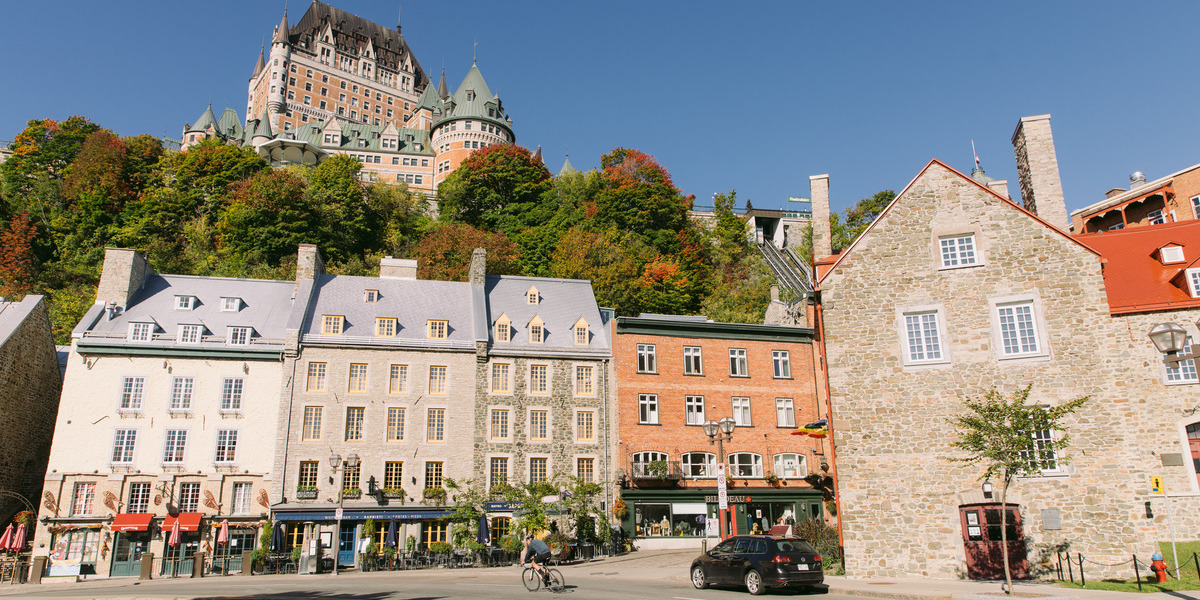
Written by Claude Plante
I often say (as many have pointed out) that if you want a great view of Quebec City, you need to go to Lévis on the south shore of the Saint Lawrence River.
And cycling along the Parcours des Anses, a 15-kilometre paved bike trail along the Trans Canada Trail, is the best way to do so. The most beautiful stretch is found right on the water’s edge.
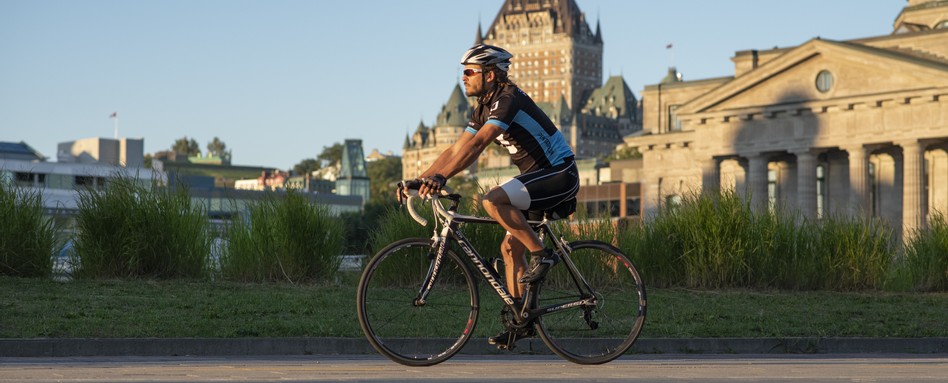
Cycling through Quebec City always makes you feel as though you’re travelling through time, especially with the Château Frontenac towering in the distance. Photo credit: Jeff Frenette, Destination Québec cité
From Quai Paquet, a public park that’s an ideal stop for bikers, you can see Quebec City’s port with its cruise ships and Old Quebec with the famous Château Frontenac towering over the landscape.
Whenever I ride there, I can’t resist the urge to stop and relax in the rest areas they have set up. They even have a fun water fountain for kids to splash around in.
This is also where you can catch the ferry to the other side of the river.
On a couple of occasions, I’ve hopped on one of the blue and white ferries heading to the north shore of the Saint Lawrence. Pedestrians and cyclists are welcome on board; the crossing fee is $4.15 per person (ages 16 to 64).
It takes about 15 minutes to get to the other side, which gives you just enough time to admire Old Quebec as you approach.
Petit-Champlain
A visit to the famous Petit-Champlain district is a must, where unique restaurants and boutiques await visitors. Photo credit: Étienne Dionne, Destination Québec cité
Once back on land, I couldn’t wait to park our bikes and visit the most beautiful attractions in historic Old Quebec, Starting with Petit-Champlain, one of the oldest commercial hubs in North America. This pedestrian district is brimming with local artisan shops and restaurants with inviting patios.
You can go back even further in time by visiting the Place Royale—the birthplace of Quebec City—just a stone’s throw away. It’s where French explorer Samuel de Champlain settled in 1608. He built “Abitation” here, a building that was not only his home, but also a fort, a store and a trading post.
Today, Notre-Dame-des-Victoires Church is guardian of this historic part of the province of Quebec’s earliest years. Built in 1688, it is the oldest stone church in North America.
The church was nearly destroyed during the Battle of the Plains of Abraham in 1759, and was fully restored in 1816. This small Catholic temple, classified as a national historic site, stands as a strong symbol of Old Quebec.
I continued my tour along the Corridor du Littoral, an urban section of the bike trail that winds through the city’s port district. This area is home to several buildings of note, including the site of Her Majesty’s Canadian Ship Montcalm and the Naval Museum of Québec.
Domaine de Maizerets estate
Further along, another historic site awaited me. The bike trail passes the Domaine de Maizerets estate. This 27-hectare park is a meeting place for families seeking a moment of calm in the estate’s mature forest.
Some 500 years ago, Indigenous peoples hunted and fished this land. After it was acquired by the Québec Seminary in 1705, it was converted into a land tenancy known as a métairie. Maison Maizerets, a veritable castle in its day, was built around 1713.
Since 1974, the estate has been classified as an historic monument. Quebec City took ownership in 1979 and the site is now open to the public.
At the foot of the falls
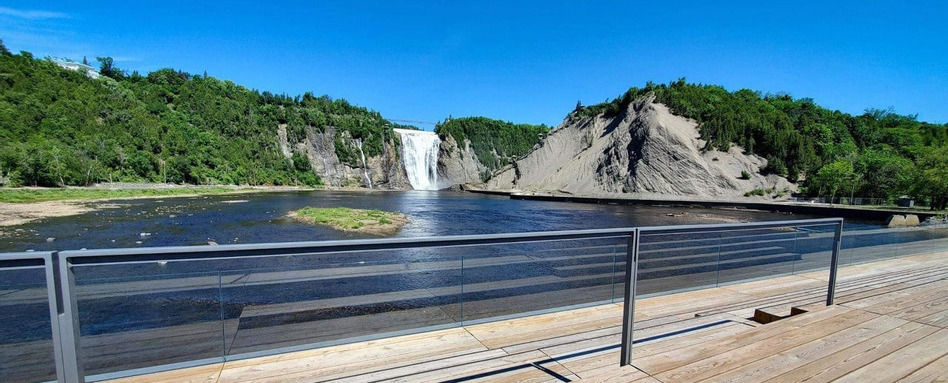
The highlight for cyclists in the Quebec City region is undoubtedly the majestic Montmorency Falls. Many stop to admire it. Photo credit: Annie Corriveau, SÉPAQ
After catching my breath in the shade of the estate’s mature trees, I continued along the trail to another major tourist attraction in the Quebec City region: Montmorency Falls.
In 1613, Samuel de Champlain named the falls after the Duke Montmorency, viceroy of New France and admiral of France and Brittany.
La Dame Blanche (the Lady in White), as they are sometimes called in reference to a local legend, has served as the backdrop to many key moments in the region’s history. For example, in 1759, General James Wolfe set up camp at the foot of the falls just before his famous victory at the Battle of the Plains of Abraham in 1759.
My route then took me along the Véloroute Marie-Hélène Prémont, a bike trail named in honour of the great female mountain bike champion. The trail runs on a designated roadway along Royale Avenue, also known as Chemin du Roy, to the Shrine of Sainte-Anne-de-Beaupré.
As you can see, cycling from Lévis to Sainte-Anne-de-Beaupré is a great way to explore local nature, history and heritage.
For the past 30 years, Claude Plante has been exploring cycling paths in Quebec and elsewhere in Canada. His adventures have led him to become a columnist under the name “Cycliste du dimanche,” sharing his discoveries on social media. A career journalist, he worked at La Tribune de Sherbrooke for 30 years, and now works with the team at 107.7 Estrie (Cogeco Media), as well as writing for various organizations.
Follow him on Facebook @LeCyclisteduDimanche
Explore Quebec City on our interactive map!
Feature photo: This is one of the first sights you see when you arrive in Old Quebec from the Lévis ferry on the south shore of the Saint Lawrence. Photo credit: Andy Vathis, Destination Québec cité


